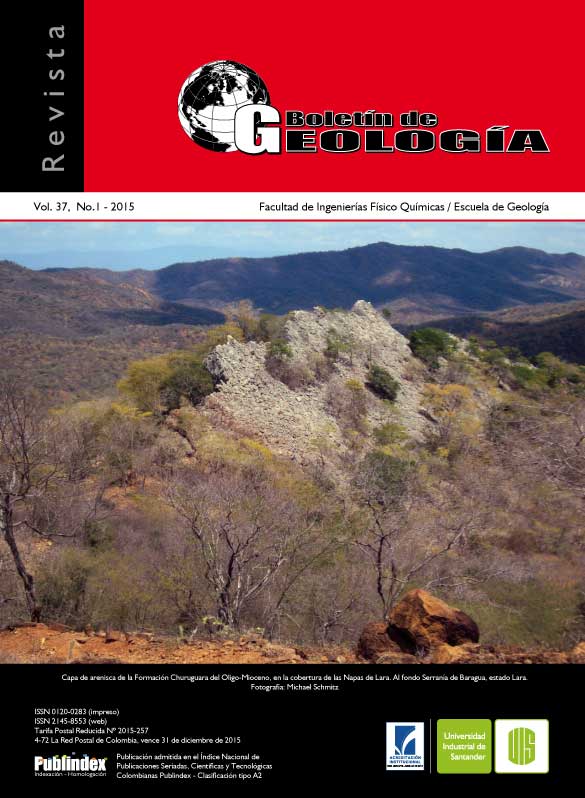CALIBRATION OF THE GEOLOGICAL/GEOPHYSICAL SUBSURFACE MODEL FOR BARQUISIMETO AND CABUDARE USING SEISMIC METHODS AND SURFACE RESPONSE SPECTRA
Published 2014-12-18
Keywords
- spectral response,
- seismic modeling,
- earthquake engennering,
- sismic microzoning,
- ReMi
- Barquisimeto ...More
How to Cite
Abstract
In the frame of Barquisimeto and Cabudare seismic microzoning project, we have carried out the revision of geological, geophysical and geotechnical data, with the purpose to obtain the characteristics of shallow and deep sedimentes of both Barquisimeto alluvial terrace and the Cabudare pull-a part basin. For this study, we have used data from seven refraction seismic profiles acquired previously in the area. A reinterpretation applying refraction microtremor (ReMi) method was done in Barquisimeto, which helped to define the shear wave velocity profile. In order to define a geological/geophysical model, these results were integrated with available geological and geotechnical information. The geological/geophysical model was used to calculate the surface response spectrum, useful in engineering design, taking into account the soil depth influence and its characteristics. With this information, the surface spectral response at Barquisimeto and Cabudare was calculated according to the sites conditions. On the other hand, with the acquisition of real earthquake data (Tucacas Mw = 6.4 - September 29, 2009), acquired through an accelerograph observatory installed in the frame of the microzonig project, it was possible to perform a calibration of the soil profile and spectra. Using the accelerograms from the observatory at bedrock, we calculated the spectral response at the soil surface by dynamic modeling, and the result was compared with the response spectrum acquired by the observatory at the surface, from the same earthquake, showing a good fit between both spectra form.
